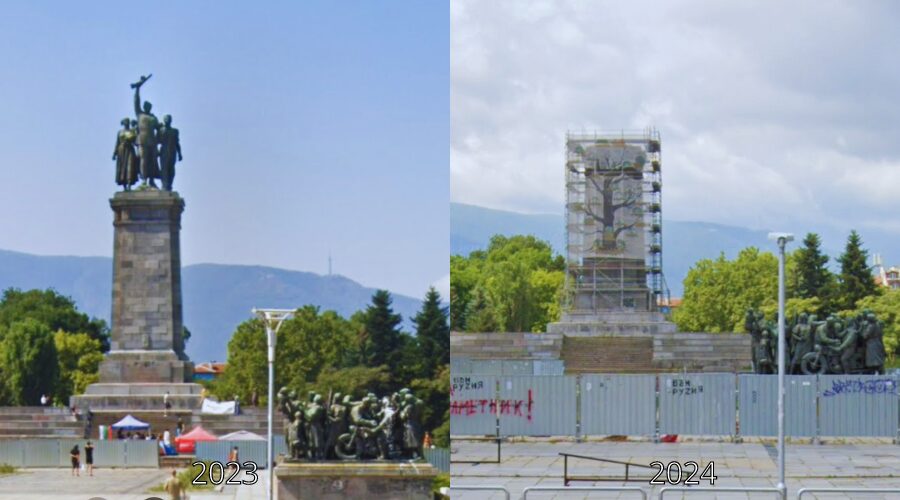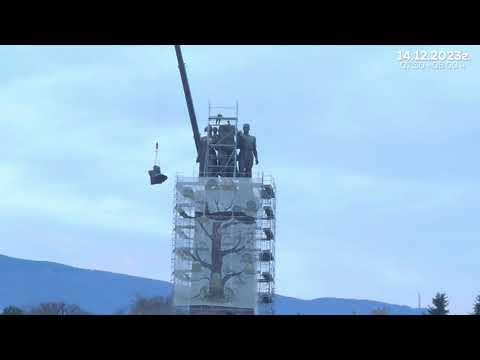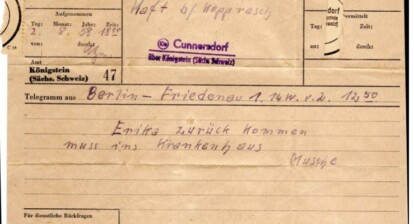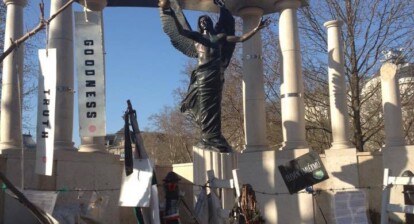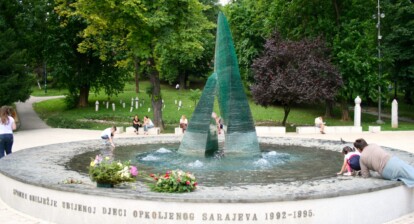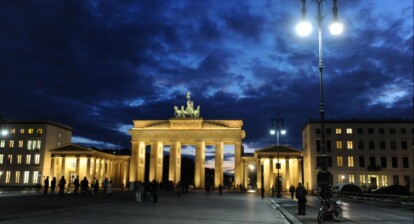The Monument to the Soviet Army in Bulgaria’s capital Sofia is a memorial whose name reveals its essence. Calls for its removal have existed for nearly three decades. In 2023, the dismantling activities began. But how is it that the communist monument Buzludzha – Bulgaria’s abandoned UFO, was given a chance for a second life while a decision for an equally communist monument shocked the public sphere? We asked Darina from Bulgaria to check the pulse.
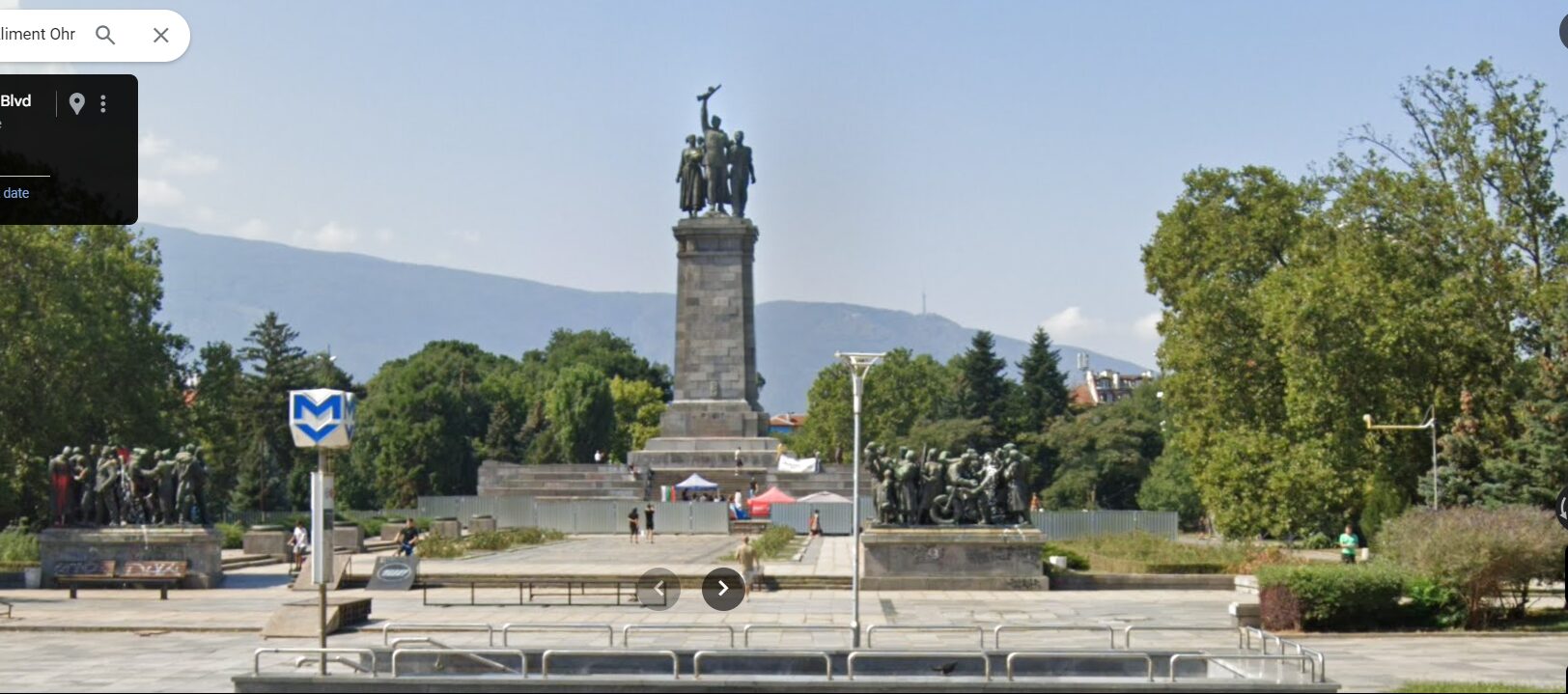 2023
2023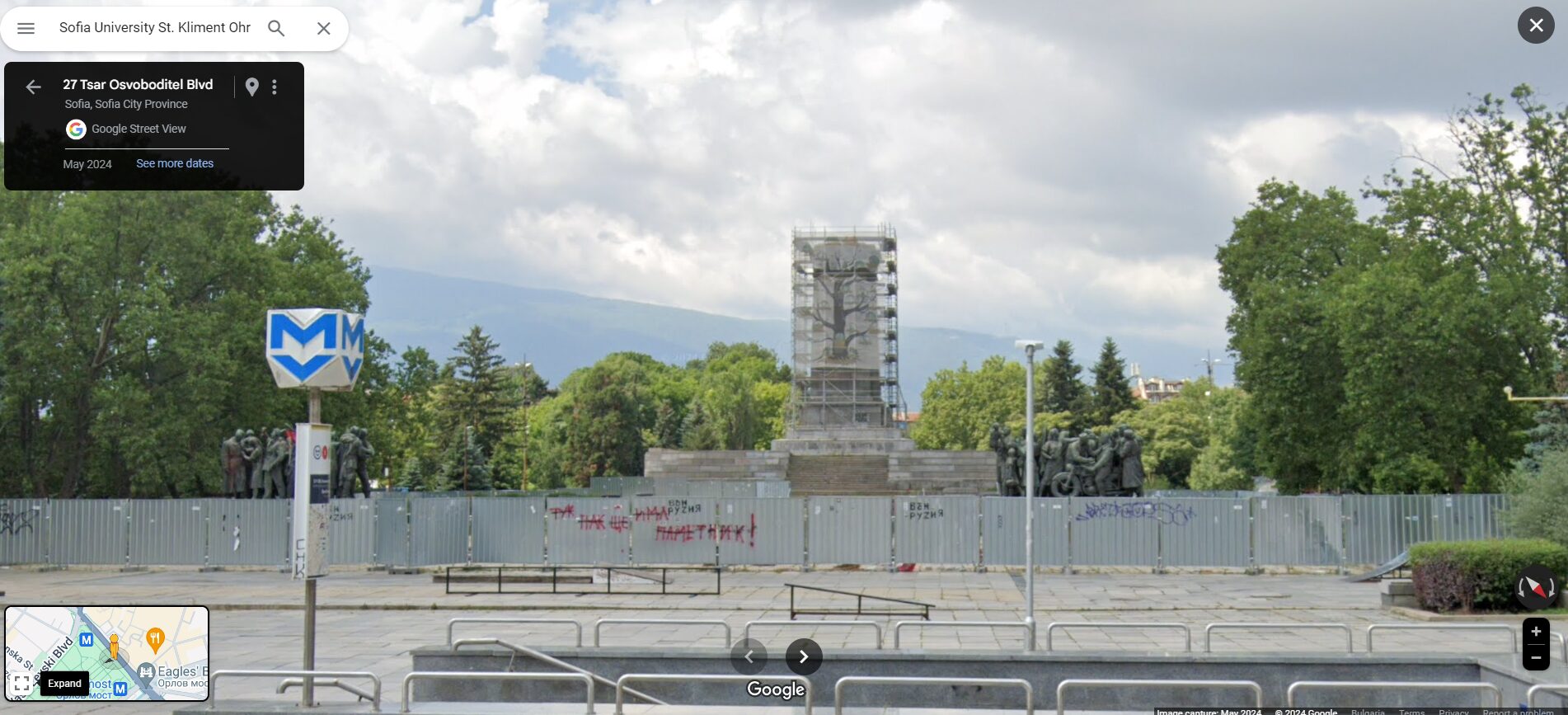 2024
2024Decades of Controversy
Calls to remove the Monument to the Soviet Army have persisted for nearly thirty years due to its origins as a communist propaganda tool and its deteriorating condition. In 2023, dismantling efforts began as the monument was deemed a safety hazard by Sofia’s regional governor, with serious structural issues and a lack of responsible management. The Ministry of Culture, originally tasked with its upkeep, has denied responsibility, arguing that the monument does not qualify as a cultural asset under the heritage law.
For the citizens of Sofia, it is clear that the political motive is more strongly expressed. The monument is one of the places where supporters of left-wing political parties and movements, as well as Russophile organisations in Bulgaria, annually commemorate historical dates related to the festive rituals of the People’s Republic of Bulgaria and the USSR. They lay wreaths and flowers and organise ceremonial concerts and other events.
Political and Social Controversy
The monuments to the Soviet Army, including the one in Sofia, remain symbols of the complex relations between Bulgaria and Russia. On the one hand, they represent a historical connection and gratitude to Russia. On the other hand, they remind of the period of Soviet occupation and influence on Bulgarian independence and sovereignty. Bulgarian society is divided over these monuments, with some viewing them as symbols of historical injustice, while others see them as part of cultural and historical heritage.
The monument was created to immortalise the victory of the Red Army in the battle against fascism and Nazism. Surprisingly though, its unveiling coincided with one year after the crushing of the Goryani Movement, which was the longest-lasting resistance against communism in the former Eastern Bloc. This resistance came mainly from Bulgarian peasants who opposed the collectivization of their lands.
The controversy surrounding the monument lies in the fact that it celebrates the triumph of an army that did not liberate Bulgaria but rather occupied it and changed the country’s path in a way that was irreversible. The monument does not acknowledge Bulgaria’s participation in World War II against Nazi Germany, despite the significant involvement of the Bulgarian army in the conflict. It showcases the triumph of the Soviet army, which occupied Bulgaria in September 1944, and this period of occupation lasted until the end of 1947.
Place of the Monument in my Heart
Personally, this monument has no special place in my heart. When I think about it, one of two things comes to mind. Either the monument situated opposite the rectorate of Sofia University, the oldest institution of higher education in Bulgaria, where I obtained both of my higher education degrees. Or that throughout the years, the monument has been used as an instrument for political expression, vandalism – or some would call it art.
Dismantling Symbols, Ignoring Realities
As it has no special place in my heart, I don’t have a strong opinion about its dismantling. It is also difficult to form an opinion due to the unclear future of this public space. Currently, there are no definitive plans for utilising the space “freed up” after its dismantling, as the monument is partially, not fully dismantled. However, seeing parts and bits of it disappear seems forced, unprovoked and unnatural. If we forget history for a moment and think about the day of the average person working in downtown Sofia, I feel like there are way more pressing issues.
The beautification of urban spaces, spraying the grass against ticks, renovating buildings, parts of which collapse daily due to lack of maintenance, repairing infrastructure, parts of which still bear the memories of bombs dropped in Sofia during World War II, making Sofia actually accessible for people with disabilities – things that seem to concern us all much more because we are affected by them daily. This is why, amidst the daily chaos, it almost feels absurd that dismantling a monument was of such crucial importance for the present and future of this country.
Dissatisfied Voices Abound
However, I could not help but notice what was happening on numerous Bulgarian media outlets and organisations that broadcast and report news, information, and analyse published the news, as well as entries on Instagram and other social media platforms.
Many voices of discontent can be heard. Some still insist that the monument should remain in the centre of Sofia. Others are pleased that the monument will finally free up the space opposite Sofia University. The space will not be completely empty anyway, as the monument is in the middle of a little park with skateboarding ramps. However, some of them are also dissatisfied – that the announced intention is not to remove the monument altogether and destroy it, but to move it to a different location.
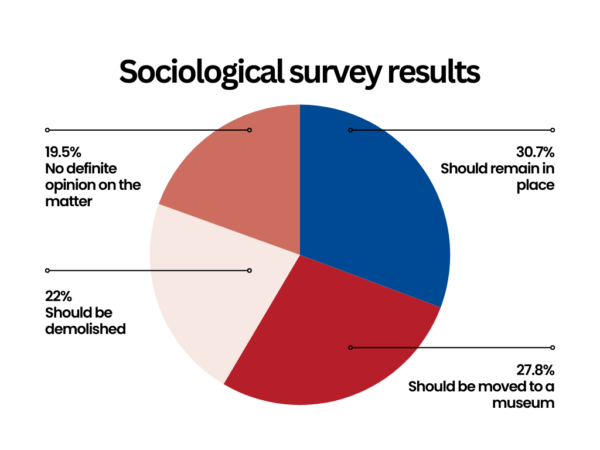
Sociological survey results (collage: private)
To be more specific, according to a sociological survey of 1,003 adult citizens conducted in Sofia in the autumn of 2023, 30.7% of respondents insisted that the monument should remain in place, 27.8% agreed that it should be moved to a museum, 22% approved of the idea of it being demolished, and the remaining 19.5% had no definite opinion on the matter.
Another Point of View
I chose to highlight 10 of the most liked comments on Instagram of one of them – Radio Free Europe, and ask one of the participants at EUSTORY Summit 2023, Darina from Bulgaria, about her opinion on the topic. But first, let’s find out what her personal stance on the monument’s present and future is.
What are the first things that come to mind when you think of the monument?
Darina: I am from the Bulgarian town Dupnitsa, and when I first saw the monument, around the age of 12, it seemed grand to me. I told myself that it must hold great symbolism. Back then, I was not so informed about what it represented. Now, when I think about the monument, my association is its controversial nature. It hides many political and social problems.
Preserving Cultural Heritage Amidst Controversy
What is the scenario for the future of the monument that you like the most?
Darina: It should not be destroyed because, for me, every piece of cultural heritage should be preserved. I believe the monument has a place in another environment, which is why I favour its dismantling. Such an environment could be in Sofia or a gallery, although it would be quite difficult because the sculptures are enormous.
This is a better option than being destroyed or remaining in its current location because, since around 2012, it has been subject to a lot of potential vandalism at its current site. This will continue if it remains opposite the rectorate of Sofia University.
Additionally, the international community and Russian ministries also want to impose restrictions on how people can create art on the monument. This further complicates the already complicated relations between Bulgaria and Russia.
And to the people around you?

The state of the monument on 9 September 2017 – the date of the 1944 Bulgarian coup d’état, which was a turning point politically and the beginning of radical reforms towards Soviet-style socialism (photo: Martin Zaimov/wikimediacommons)
Darina: The people around me do not express their opinions much on this matter. They do not consider it the highest priority issue. Topics of priority include, for instance, coping with poverty, and figuring out how to both put food on the table and pay the electricity bills. Every fifth person in Bulgaria lived below the poverty line in 2023. The poverty threshold in 2023 was BGN 638 (EUR 326) a month. Another dimension of the same issue is the inflation of an annual 5.1%. 1.8 percentage points higher than needed to join the Eurozone.
Monument Interpretation
Was there a difference in the reactions of the young and the old? What do you think it was due to?
Darina: Young people are more open to listening to different interpretations of the monument and forming their own opinions without being as influenced by historical references. Older people have established opinions and hold on to them. They are stronger supporters of a certain ideology (in this case, communism, which was the ruling ideology in the period 1944-1990) and are firm in what they stand for.
Instagram Comments – Food for Thought
Support
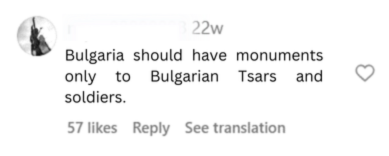
Darina: I agree that there should be more monuments like this, but not only these. The Ministry of Culture has a huge responsibility for what is on the streets where citizens walk. We need to place our trust in the ministry that its decisions align with our views. It is difficult to achieve this for every monument and to satisfy everyone. That is unfortunate, but it is what it is.
A good idea is to conduct more sociological surveys that the ministry can take into account. However, I have not seen progress in this regard on various issues.
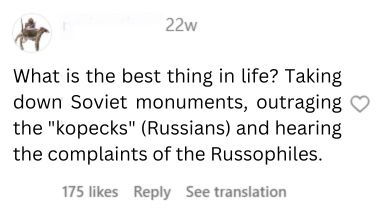
Darina: Another aspect of the monument is not just that it is used for vandalism, but also that the space around it is used for events and concerts with a pro-Russian orientation. These people have extreme opinions. For me, such displays of political bias are part of the reason I want it removed from its current location.

Horo (a type of circle dance) in front of the monument during the festivities on 9 May 2016 – the day commemorating the Soviet Union victory over Nazi Germany in 1945 (Source: Ivanov_id/wikimediacommons)
Darina: The more civilized approach is to dismantle it. However, upon reflection, its sudden removal is much better than the continuous decades-long discussions about what to do with it. It will already be a done deal, and there will not be as much controversy afterward.
Neutrality
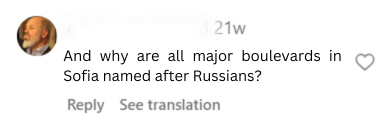
Darina: We borrow a lot from Soviet history, and I find the question interesting as well. However, this is not a decision for the citizens but for the responsible authorities. The ideal scenario would be for 80 percent of the boulevard and street names to be Bulgarian public figures, and 20 percent to be foreign.
Opposition
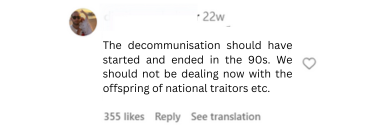
Darina: Attempts were made to dismantle it even during communism. In the 90s, it seemed like a more appropriate time. However, due to many contradictions, it still wasn’t possible. If it had been moved then, perhaps there would not have been so many disputes about it for decades. From another perspective, now is the time to prevent even more severe discontent in the future.
Reconciling Bulgaria’s Liberation with the Legacy of Soviet Occupation
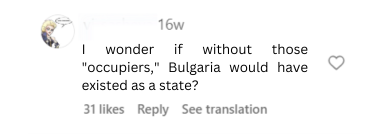
Darina: I would not categorise myself as a Russophobe or Russophile. I do not agree that Russia should be glorified so much by Bulgaria, but I do not deny its help in liberating us from the Ottoman Empire. However, after the Second World War, the communist regime was imposed from above. On 5 September 1944, the USSR unilaterally declared war on the Kingdom of Bulgaria. On 9 September, Soviet forces entered Bulgarian territory. Therefore, I disagree with the slogan of the monument which reads “To the Soviet liberating army, from the grateful Bulgarian people.”
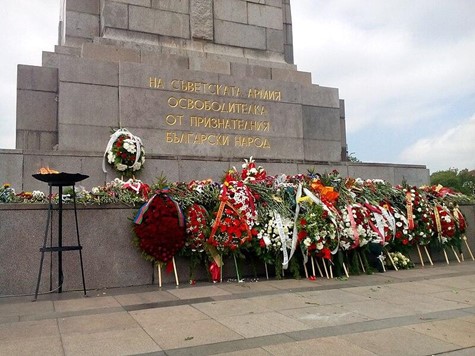
The slogan of the momuement, alongside flowers laid on 9 May 2016 – the day commemorating the Soviet Union victory over Nazi Germany in 1945 (Source: Ivanov id/wikimediacommons)
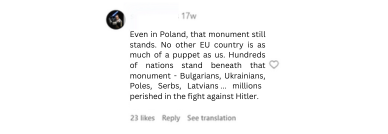
Darina: It is true that the peoples and circumstances surrounding the Second World War are complex. Every country has the right to make decisions on this matter.
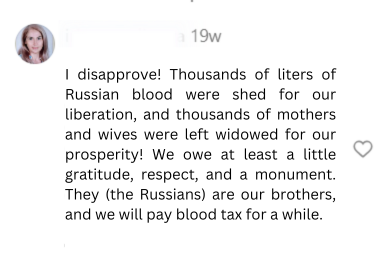
Darina: My mother not only enjoys Russian music but also fondly remembers sweet Russian films from her childhood. I understand that people appreciate this fraternal feeling of Slavic community. We, the younger generation, have not grown up so much with Russian culture. An expression of this is the languages taught in school.
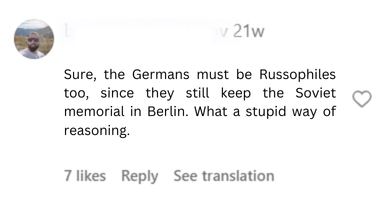 Darina: People created the monument at some point. The law on declaring the criminal nature of the communist regime in Bulgaria, adopted on 26 April 2000, is still in effect, and we should be moderate in this regard.
Darina: People created the monument at some point. The law on declaring the criminal nature of the communist regime in Bulgaria, adopted on 26 April 2000, is still in effect, and we should be moderate in this regard.
Social Media Impact
Do you think there is any effect in Bulgaria from the social media rioting through comments?
Darina: It is okay to express your civic stance on social media, although I am someone who never expresses opinions there. It is similar with elections – many people do not vote but share their opinions online. We need to familiarize ourselves with different viewpoints. This way, others can become acquainted with a wide spectrum of opinions and form their own.
Why is the protest at this monument somewhat passive, mainly online, and people not taking to the streets?
Darina: We Bulgarians like to post anonymously and passively, using hidden names to express our opinions. From a socio-social perspective, this is still expressing an opinion. People may have specific opinions, but in my view, they are not fully informed about the issue and do not want to become informed. As a result, they form their views based on conversations with others rather than on accurate information. Without enough information, they cannot be fully confident in what they are doing. Later, they say to themselves, “What will I achieve anyway,” convinced that they will not change anything.
A Bright Future in a Dark Museum
Subject to controversies in the present, the Soviet Army monument’s future is uncertain and may or may not be included in the history books of the upcoming generation. It is far removed from a central public garden, where many citizens relax with a long-awaited beer after work. The Socialist Art Museum, located in a not-so-central residential neighborhood, likely awaits bits and pieces of it, the same way it awaits its few tourists on an annual basis. All of this while the country continues to decide the fate of similar monuments on a case-by-case basis without a clear policy in this regard.

